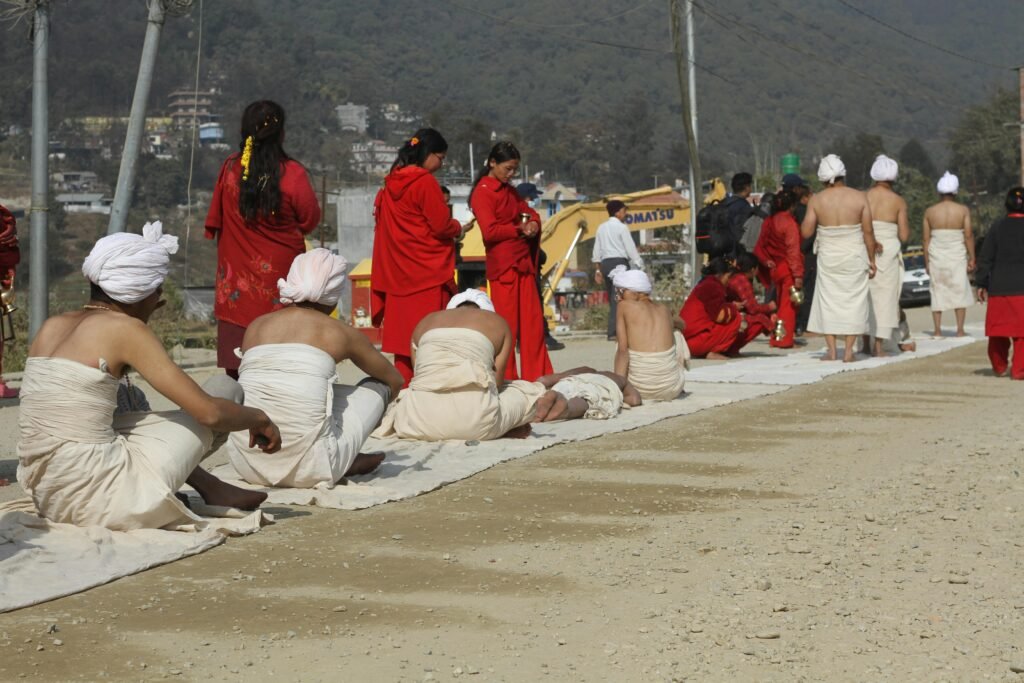Maintaining your dirt bike properly is crucial to ensuring its optimal performance and longevity. In this article, we will explore the significance of regular maintenance for dirt bikes and provide you with a handy maintenance schedule to keep your bike in top shape. Whether you are a seasoned dirt bike enthusiast or a beginner, understanding the importance of regular maintenance is key to maximizing your riding experience and protecting your investment.
Importance of Regular Maintenance
Regular maintenance is crucial for the overall performance, efficiency, safety, and lifespan of your dirt bike. Just like any other machine, your dirt bike requires constant care and attention to ensure it operates at its best. By following a regular maintenance routine, you can prevent costly repairs, enhance its performance, and extend its lifespan. In this article, we will discuss the various tasks and steps involved in maintaining your dirt bike to keep it running smoothly for years to come.
Enhances Performance and Efficiency
Regular maintenance plays a significant role in enhancing the performance and efficiency of your dirt bike. When your bike is properly maintained, its engine stays in peak condition, allowing it to deliver optimal power and performance. This means quicker acceleration, smoother rides, and better overall handling. Additionally, proper maintenance reduces friction and wear and tear on important components, allowing the bike to operate more efficiently. By conducting routine maintenance tasks, you can ensure that your dirt bike performs at its best, providing you with a more enjoyable riding experience.

This image is property of images.pexels.com.
Ensures Safety
Safety should always be a top priority when operating a dirt bike. Regular maintenance plays a crucial role in ensuring the safety of both the rider and other individuals on the road or trail. By conducting routine inspections and maintenance tasks, you can identify and address any potential safety hazards before they cause accidents or injuries. Checking the brakes, inspecting the tires, and maintaining proper fluid levels not only enhances the bike’s performance but also ensures that it operates safely in all conditions. Remember, a well-maintained dirt bike is a safe dirt bike.
Prevents Costly Repairs
One of the most significant advantages of regular maintenance is that it helps prevent costly repairs. By addressing potential issues early on, you can avoid major breakdowns and the need for expensive repairs in the future. Neglecting to maintain your dirt bike can lead to minor issues escalating into major damage, which not only affects your wallet but also causes frustration and inconvenience. Regularly inspecting your bike, replacing worn-out parts, and performing necessary adjustments can help identify and resolve problems before they become more severe, saving you both time and money in the long run.

This image is property of images.pexels.com.
Prolongs Lifespan
With proper and regular maintenance, you can significantly extend the lifespan of your dirt bike. Similar to how a well-maintained car can go well beyond its expected lifespan, a dirt bike that receives regular care can last for many years. The combination of performing routine maintenance tasks, such as changing fluids, inspecting electrical systems, and replacing worn-out parts, can keep your bike in optimal condition. By following a regular maintenance schedule and addressing issues promptly, you can ensure that your dirt bike continues to serve you well for a long time.
Daily Maintenance Tasks
To keep your dirt bike in excellent condition, there are several daily maintenance tasks you should perform. These tasks, though simple, play a crucial role in ensuring your bike’s performance and safety on a day-to-day basis. Here are some daily maintenance tasks you should prioritize:
Checking Tire Pressure
Maintaining proper tire pressure is essential for optimum performance and safety. Regularly check the tire pressure of your dirt bike using a reliable pressure gauge. Underinflated tires can affect your bike’s handling and stability, while overinflated tires can lead to a harsh ride and reduced traction. Refer to your bike’s manual or the manufacturer’s recommendations for the appropriate tire pressure and make adjustments as needed.
Inspecting Brakes
The brakes are a critical safety component of any vehicle, and your dirt bike is no exception. Regularly inspect the brake pads, rotors, and calipers for any signs of wear or damage. Ensure that the brake levers and pedals are working smoothly and not sticking. If you notice any issues or a decrease in braking performance, have them inspected and repaired by a professional mechanic immediately.
Checking Chain Tension
The chain is an integral part of your dirt bike’s drivetrain and requires regular attention. To maintain proper chain tension, use a chain tension gauge or refer to your bike’s manual for the correct specifications. A loose chain can cause poor performance and excessive wearing of sprockets, while an overly tight chain can lead to premature failure and increased stress on other components. Adjust the chain tension as necessary, ensuring it has the appropriate amount of slack.
Inspecting Fluid Levels
Regularly check the fluid levels in your dirt bike, including the engine oil, coolant, brake fluid, and transmission fluid. Low levels can indicate a leak or an issue that requires attention. Ensure that you are using the recommended fluids and that they are clean and free of any contaminants. If you notice any significant decrease in fluid levels, consult your bike’s manual or a professional mechanic for further guidance.
Cleaning Air Filter
A clean air filter is essential for optimal engine performance and longevity. Dust, dirt, and debris can clog the air filter, reducing airflow to the engine and potentially causing damage. Regularly inspect and clean the air filter, following the manufacturer’s instructions. If the filter is excessively dirty or damaged, replace it with a new one to ensure proper airflow and protection for your engine.
Checking Controls and Cables
Regularly inspect the controls and cables of your dirt bike, including the throttle, clutch, and brake cables. Check for any signs of fraying, sticking, or excessive wear. Lubricate the cables as recommended by the manufacturer to ensure smooth operation. Properly functioning controls and cables are crucial for your safety and control while riding, so address any issues promptly and replace worn-out components as needed.

This image is property of images.pexels.com.
Weekly Maintenance Tasks
In addition to the daily maintenance tasks, there are several weekly maintenance tasks that should be performed to keep your dirt bike in optimal condition. These tasks help address more specific aspects of your bike and provide ongoing care and attention. Here are some weekly maintenance tasks to include in your routine:
Changing Oil
Regularly changing the oil in your dirt bike’s engine is vital for its overall health and performance. Engine oil helps lubricate and cool the moving parts, reducing friction and wear. Consult your bike’s manual to determine the recommended oil change intervals and the type of oil suitable for your engine. Regular oil changes will help prolong the lifespan of your engine and ensure it operates at its best.
Cleaning the Bike
Regular cleaning not only keeps your dirt bike looking great but also helps maintain its performance. Remove any dirt, mud, or grime that may have accumulated on the bike. Pay attention to hard-to-reach areas such as the chain, sprockets, and radiator fins. Use a mild detergent and a soft cloth or sponge to avoid damaging the bike’s surfaces. After cleaning, thoroughly rinse off the detergent and ensure that the bike is completely dry before storage.
Lubricating Moving Parts
Lubricating the moving parts of your dirt bike is essential for reducing friction and ensuring smooth operation. Apply lubrication to various components such as the chain, pivot points, cables, and other moving parts as recommended by the manufacturer. Use a high-quality lubricant appropriate for the specific components to ensure optimal performance and prevent premature wear.
Inspecting Suspension
Your dirt bike’s suspension system plays a critical role in providing a smooth and comfortable ride. Regularly inspect the suspension components, including the forks, shocks, and linkage, for any signs of leaks, damage, or wear. Check the suspension’s travel and adjust it if necessary according to your riding preferences and the manufacturer’s recommendations. If you notice any significant issues or decrease in performance, have the suspension inspected and serviced by a professional.
Checking Spark Plug
The spark plug is responsible for igniting the fuel-air mixture in your dirt bike’s engine. Regularly inspect the spark plug for signs of wear, such as fouling or excessive carbon build-up. Refer to your bike’s manual for the recommended spark plug replacement intervals and specifications. If the spark plug is worn out or damaged, replace it to ensure proper combustion and optimum engine performance.
Monthly Maintenance Tasks
While daily and weekly maintenance tasks focus on the immediate needs of your dirt bike, monthly maintenance tasks provide a more in-depth inspection and care. These tasks address the various components and systems of your bike that require attention on a slightly less frequent basis. Here are some monthly maintenance tasks to include in your routine:
Checking Electrical System
The electrical system of your dirt bike is crucial for various functions, including ignition, lighting, and instrumentation. Regularly inspect the electrical wiring, connectors, and components for any signs of damage or loose connections. Check the battery’s charge and ensure it maintains a proper voltage level. If you experience any electrical issues or notice any abnormal behavior, consult your bike’s manual or a professional mechanic for further evaluation.
Inspecting Wheel Bearings
Wheel bearings are important for a smooth and stable ride. Regularly inspect the wheel bearings for any signs of wear, such as excessive play or noise. Rotate the wheels and feel for any roughness or resistance. If you notice any issues or suspect a problem with the wheel bearings, have them inspected and replaced if necessary by a professional mechanic.
Inspecting Exhaust System
The exhaust system plays a crucial role in the performance and sound of your dirt bike. Regularly inspect the exhaust system, including the header pipe, muffler, and mounting brackets, for any signs of damage or leaks. Ensure that the exhaust system is securely fastened and that there are no loose or missing components. Any issues with the exhaust system can affect your bike’s performance and may result in increased noise levels, so address them promptly.
Adjusting Valve Clearance
Valve clearance refers to the gap between the valve stem and the corresponding cam lobe. Regularly check and adjust the valve clearance of your dirt bike’s engine as recommended by the manufacturer. Incorrect valve clearance can lead to decreased engine performance, increased valve noise, and potential engine damage. If you are unsure how to adjust the valve clearance, consult your bike’s manual or seek assistance from a professional mechanic.
Inspecting Fuel System
The fuel system of your dirt bike is responsible for delivering the correct fuel-air mixture to the engine. Regularly inspect the fuel system, including the fuel tank, fuel lines, and carburetor or fuel injection system, for any signs of leaks, blockages, or other issues. Ensure that the fuel tank is clean and free of debris. If you notice any significant issues or experience poor fuel economy, have the fuel system inspected and serviced by a professional mechanic.
Periodic Maintenance Tasks
Periodic maintenance tasks are those that may not need to be performed as frequently as the daily, weekly, or monthly tasks but are still essential for the long-term care of your dirt bike. These tasks typically involve inspecting and replacing various components that may wear out over time. While the specific intervals for these tasks may vary depending on your bike model and usage, it is essential to include them in your maintenance routine. Here are some periodic maintenance tasks to consider:
Inspecting and Replacing Filters
Regularly inspect and replace the filters in your dirt bike, including the air filter, oil filter, and fuel filter. Over time, filters can become clogged with dirt, debris, and contaminants that can affect engine performance and longevity. Follow the manufacturer’s recommendations for filter replacement intervals and ensure that you use high-quality filters suitable for your bike’s specific requirements.
Replacing Brake Pads
Brake pads are wear items that require periodic replacement. Regularly inspect the brake pads to ensure they have sufficient thickness. If the brake pads are excessively worn or there are any signs of uneven wear, replace them immediately. Worn brake pads can compromise braking performance and increase the risk of accidents. Always use high-quality brake pads and follow the manufacturer’s recommendations for proper installation.
Replacing Chain and Sprockets
The chain and sprockets are crucial components of your dirt bike’s drivetrain. Regularly inspect the chain for signs of wear, such as elongation, rust, or damaged links. Check the sprockets for any signs of wear, such as worn teeth or uneven wear patterns. If the chain or sprockets show significant signs of wear, replace them to maintain proper power transmission and prevent damage to other drivetrain components.
Inspecting and Adjusting Clutch
The clutch system allows for smooth engagement and disengagement of power to the rear wheel. Regularly inspect the clutch components, including the plates, springs, and cable (if applicable), for any signs of wear or damage. Adjust the clutch cable or lever as necessary to ensure proper operation and engagement. If you experience any clutch-related issues, such as slipping or difficulty in shifting gears, have the clutch inspected and serviced by a professional mechanic.
Inspecting and Adjusting Throttle
The throttle controls the engine’s speed and power output. Regularly inspect the throttle system, including the cables, grip, and return spring, for any signs of wear or damage. Lubricate the cables and ensure that they move smoothly without any sticking or binding. Adjust the throttle cable tension as necessary to ensure responsive throttle operation. Address any issues with the throttle promptly to maintain precise control over your dirt bike.
Tips for Proper Maintenance
In addition to following the maintenance tasks outlined above, here are some valuable tips to ensure proper maintenance and care for your dirt bike:
Follow Manufacturer’s Recommendations
Always refer to your bike’s manual and the manufacturer’s recommendations for maintenance intervals, procedures, and specifications. Manufacturers design their bikes with specific maintenance needs in mind, so following their guidance will help ensure optimal performance and longevity.
Create a Maintenance Schedule
Create a maintenance schedule that outlines the various maintenance tasks, intervals, and due dates. Having a clear schedule will help you stay organized and ensure that you don’t miss any crucial maintenance tasks. Consider using a calendar or a maintenance app to help you track and manage your maintenance routine.
Keep a Maintenance Log
Keep a detailed maintenance log that records all the maintenance tasks, inspections, and repairs performed on your dirt bike. This log serves as a valuable reference to track the bike’s history and ensure that all necessary tasks have been completed. It can also be beneficial when selling the bike, as potential buyers may appreciate the documented care and maintenance.
Use Quality Parts
When it comes to replacing parts or consumables on your dirt bike, always opt for high-quality, OEM (Original Equipment Manufacturer) or OEM-equivalent parts. Using substandard or incompatible parts can lead to poor performance, premature wear, and potential safety risks. Invest in quality parts that are designed specifically for your dirt bike model.
Properly Store the Bike
When not in use, it is vital to properly store your dirt bike to protect it from the elements and prevent deterioration. Store the bike in a dry and secure area, preferably indoors or under a protective cover. Ensure that the bike is clean and dry before storage to prevent rust and corrosion. If storing for an extended period, consider using a fuel stabilizer, removing the battery, and taking other necessary precautions as recommended by the manufacturer.
Common Maintenance Mistakes
While proper maintenance is essential, it is equally important to avoid common maintenance mistakes that can compromise your dirt bike’s performance and longevity. Here are some common pitfalls to avoid:
Neglecting Regular Inspections
Regular inspections are crucial for identifying potential issues before they escalate into significant problems. Neglecting routine inspections can lead to undetected wear, damage, or safety hazards that can affect your bike’s performance and safety. Make sure to allocate time for inspections and address any issues promptly.
Not Using the Right Tools
Using the correct tools for maintenance tasks is crucial for both effectiveness and safety. Using the wrong tools can damage components or lead to injury. Always use the recommended tools or specialized tools designed for dirt bike maintenance. Invest in a quality toolkit that includes a variety of wrenches, sockets, screwdrivers, and other essential tools.
Skipping Maintenance Steps
Every maintenance step serves a purpose, and skipping any of them can have consequences. Each task contributes to the overall health and performance of your dirt bike. Following a comprehensive maintenance routine ensures that you address all aspects of your bike and prevent potential issues from arising.
Ignoring Unusual Noises or Vibrations
Unusual noises or vibrations from your dirt bike should never be ignored. They can be signs of underlying problems that require immediate attention. If you notice any unexpected sounds or vibrations during your rides, stop and inspect your bike. If you are unable to diagnose or resolve the issue, consult a professional for further evaluation.
Improper Storage
Improper storage can lead to damage, accelerated wear, and potential safety hazards. Leaving your dirt bike exposed to the elements or storing it in an unsuitable environment can result in rust, corrosion, and deterioration. Always store your bike in a dry and secure area, following the manufacturer’s guidelines for long-term storage.
Importance of a Professional Mechanic
While regular maintenance tasks can be performed by most dirt bike owners, there are times when the expertise of a professional mechanic is necessary. Here are some reasons why consulting a professional mechanic is important:
Expertise and Experience
Professional mechanics specialize in working with dirt bikes and have extensive knowledge and experience in diagnosing and solving various issues. They are familiar with the complexities of different bike models and can provide expert advice and guidance on maintenance and repairs.
Specialized Tools and Equipment
Professional mechanics have access to specialized tools and equipment that may not be readily available to most dirt bike owners. These tools are specifically designed for precise diagnostics, repairs, and maintenance tasks, allowing for more accurate and efficient work.
Diagnosing and Solving Complex Issues
While routine maintenance tasks can be performed by most owners, some issues may require in-depth diagnosis and repair. Professional mechanics have the expertise to identify and solve complex problems that may be beyond the capabilities of most owners. They can save you time, effort, and frustration by quickly resolving challenging issues.
Saves Time and Effort
Performing comprehensive maintenance tasks can be time-consuming, especially for those less familiar with dirt bikes. By entrusting your bike to a professional mechanic, you save valuable time and effort that can be better spent enjoying your riding adventures. Mechanics can efficiently perform maintenance tasks, freeing you up to focus on other aspects of your life.
Peace of Mind
Consulting a professional mechanic provides peace of mind, knowing that your dirt bike is in capable hands. Mechanics follow industry standards and best practices to ensure that your bike receives the proper care and attention it deserves. With their expertise and training, you can have confidence that your bike will be serviced to the highest standard.
Conclusion
Regular maintenance is of utmost importance when it comes to taking care of your dirt bike. By following a comprehensive maintenance routine, you can enhance performance, ensure safety, prevent costly repairs, and prolong the lifespan of your bike. From daily checks to periodic inspections and tasks, each maintenance step plays a vital role in keeping your dirt bike in optimal condition. Remember to follow the manufacturer’s recommendations, create a maintenance schedule, and keep a detailed log of all maintenance performed. When faced with more complex issues or for peace of mind, don’t hesitate to consult a professional mechanic. By giving your dirt bike the care it deserves, you can enjoy many years of safe, exhilarating, and trouble-free riding adventures.
